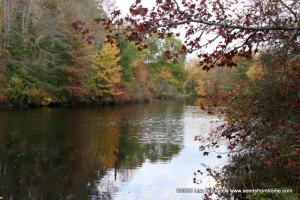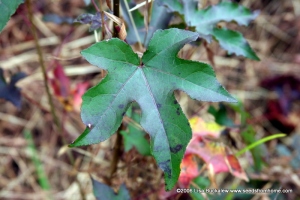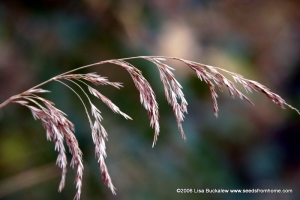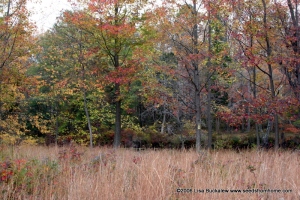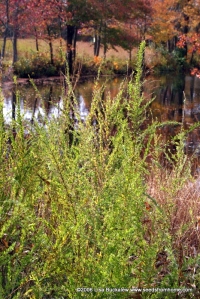Recovering from Colony Collapse Disorder
In the world of honey bees and beekeeping there is condition being called Colony Collapse Disorder or CCD. Considering that bees of all kinds are responsible for pollinating the very food we eat and that without them, our food supplies are negatively affected, CCD has worldwide attention.
The disorder leaves little evidence, such as a pile of dead bees to study. Hives are simply empty. Entire colonies of honey bees seem to have left for work in the morning and then never found their way back home. Without foraging bees returning with the pollen and nectar that nourishes the hive, the colony collapses and just … disappears.
There are many studies happening all at once to determine the source of honey bee die offs. Conclusions range from cell phone towers to insecticides applied to crops and in the case of genetically altered seeds, to the very plants themselves.
It occured to me that this colony collapse disorder in beekeeping is, for whatever reason, not unlike what has been experienced in our little 3D world – the collapse of community. Artists and 3D enthusiasts that once found a home in the various 3D communities just seem to … disappear.
So, how do we recover from CCD? What can we possibly do to make a difference when we don’t even really know for certain what the true cause of the collapse is? And what if there are many overlapping causes or perhaps the perfect storm of events that is creating this CCD? What do we do? How can we turn it around?
 My husband Jeff and I are beekeepers. In our experience so far we have not successfully over-wintered even one hive. One year they didn’t have enough food, another was hive beetles and wax moths. Then two years of hurricanes with Irene flooding over two dozen hives and drowning thousands of bees, and most recently, Super-Storm Sandy hitting just a few days after we were forced to move our hives in response to discovering someone trying to steal them.
My husband Jeff and I are beekeepers. In our experience so far we have not successfully over-wintered even one hive. One year they didn’t have enough food, another was hive beetles and wax moths. Then two years of hurricanes with Irene flooding over two dozen hives and drowning thousands of bees, and most recently, Super-Storm Sandy hitting just a few days after we were forced to move our hives in response to discovering someone trying to steal them.
Our apiary is within a small meadow surrounded by forest. Outside of the forest, our community is dotted with residential areas surrounded by farms growing various food crops. We’ve considered that perhaps our bees are encountering something on their foraging expeditions that is causing them to either die on the spot or forget how to get home.
Our response to this challenge is to provide natural, organic food sources within the apiary. We feel that if we nourish our bees well at home perhaps we can increase their chances of returning and/or surviving when they do choose to venture outside of their own back yard. We’ve started creating what we are calling honeybee sanctuaries; food plots for honey bees.
These bee-browsing areas consist of a spectrum of native flowering plants that provide a natural abundance of the pollen and nectar required for honey bees to produce thriving colonies, as well as the sweet rewards of their efforts – sweet, golden, delicious honey.
This is the first year in the last six years that we do not have honey bees in our hives. In the fall we will be ordering a few ‘nuc’ (short for nucleus) packages that will be delivered early next spring. These nuc’s are small, starter hives that consist of five frames, a queen with nurse bees and a large handful of worker bees in various stages of growth and development. Within the nuc, the workers do their best to support the queen so she will lay eggs and expand the colony.
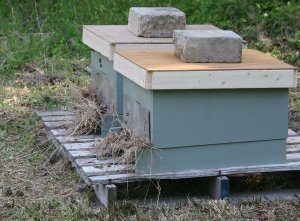 This expansion requires sharing of the load across the worker bees. Honey bees have different roles throughout their lives. Young, newly emerged bees are the only ones who can produce wax so they stay at home and build comb. When they get a bit older their roles begin to shift. Some attend the queen, some forage for food, some clean and fan the hive to keep the temperature even and some do a little bit of everything. Considering the life span of a honey bee is six weeks on average there’s also the task of rearing of new bees to ensure the hive keeps going.
This expansion requires sharing of the load across the worker bees. Honey bees have different roles throughout their lives. Young, newly emerged bees are the only ones who can produce wax so they stay at home and build comb. When they get a bit older their roles begin to shift. Some attend the queen, some forage for food, some clean and fan the hive to keep the temperature even and some do a little bit of everything. Considering the life span of a honey bee is six weeks on average there’s also the task of rearing of new bees to ensure the hive keeps going.
It seems to me that a thriving bee colony is not unlike a thriving community. Everyone has a certain unique thing they do that is seemingly effortless for them – a thing that is their gift and is essential to the nourishment of the hive as a whole. When these small, unique gifts are combined, each supporting and collaborating with the other, the possibilities for a thriving colony and an abundance of sweet, delicious honey become endless.
 Right now, the Hive over at HiveWire 3D can be likened to the nuc, with all who contribute here being the nurse bees, worker bees and drones who are each an individual part of a collective movement from the energy of starving artist to thriving artist. We are grateful for all who are contributing to the buzz.
Right now, the Hive over at HiveWire 3D can be likened to the nuc, with all who contribute here being the nurse bees, worker bees and drones who are each an individual part of a collective movement from the energy of starving artist to thriving artist. We are grateful for all who are contributing to the buzz.


